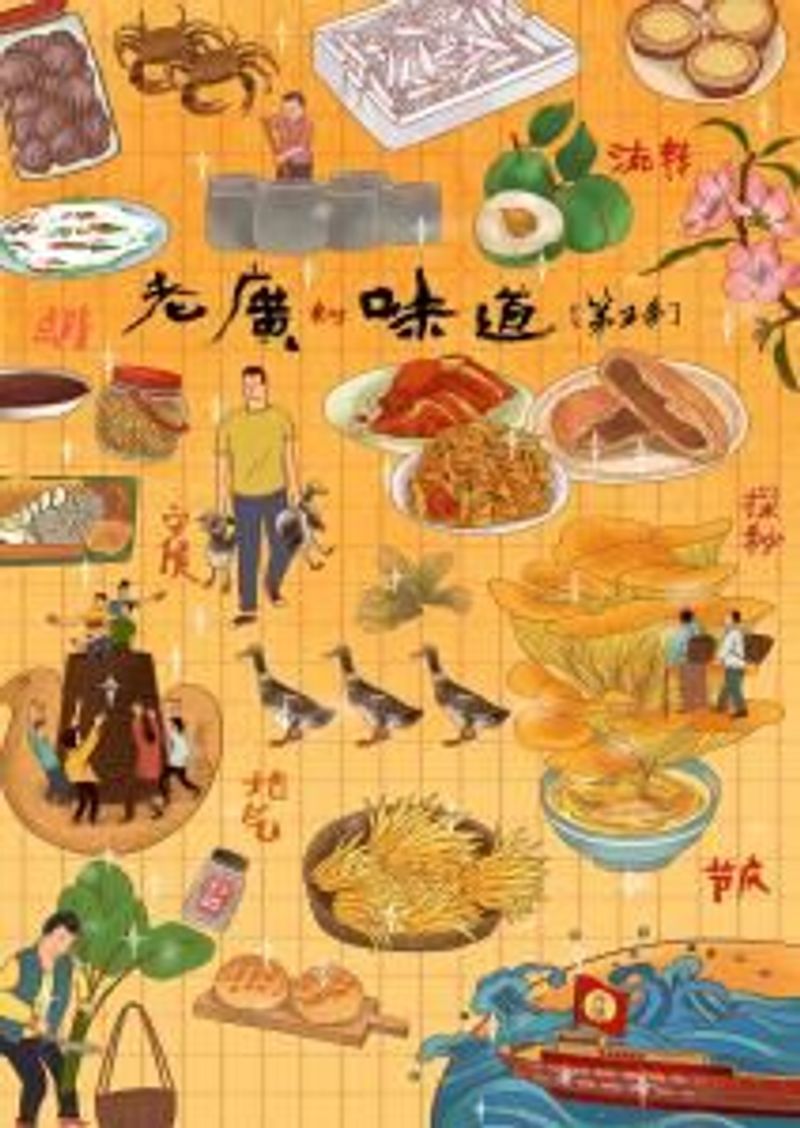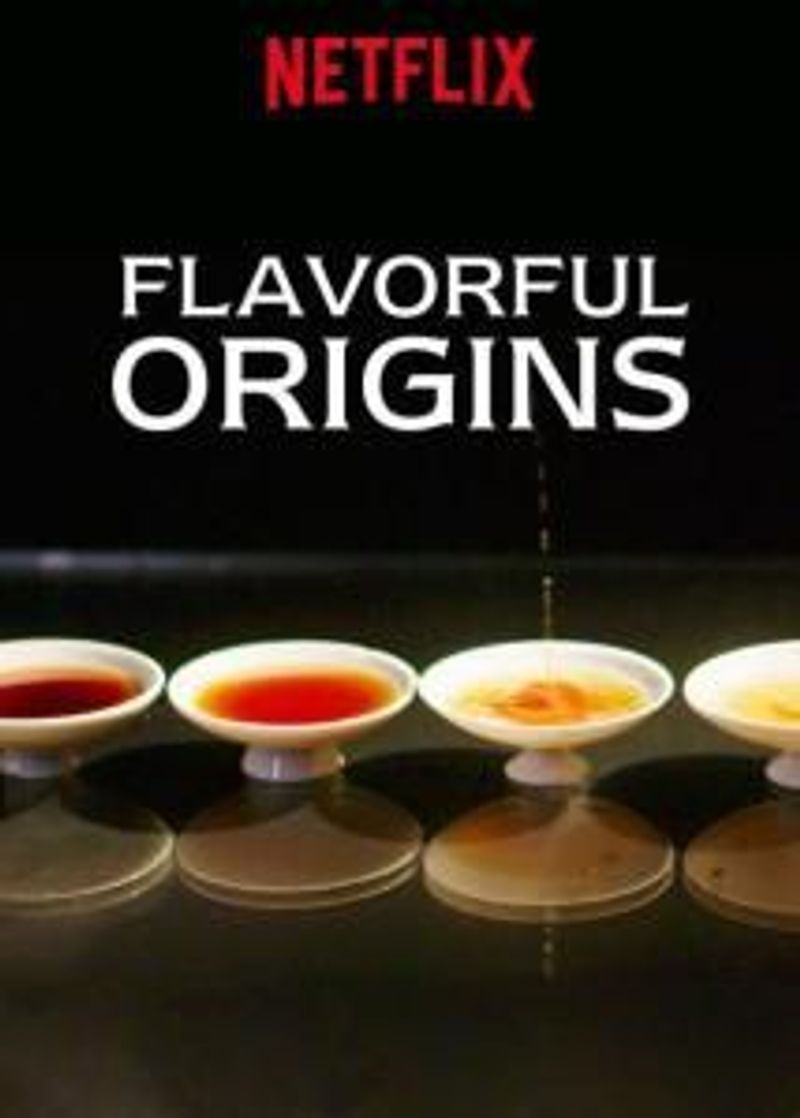icon
password
Multi-select
tags
ID
type
status
slug
summary
category
date
Author
URL
Listen to the Chinese food stories told by the Chinese themselves.
Over the past few years, China itself has produced a number of documentaries related to Chinese cuisine. Maybe you have heard or seen some of it, like A Bite of China, but that’s not all you can watch.
These documentaries are also very popular in China. Because China is a nation with a vast territory. Its southernmost tip is in the tropics zone, and its northernmost tip is near the arctic region. There is a long coastline to the east, and plateau and desert terrain to the west.
This has led to the production of completely different ingredients in different parts of China and has fostered completely different cooking and eating habits. These varied cuisines are challenging to exhaust and understand, even for the Chinese themselves.
In fact, some of the Chinese food often eaten by foreigners does not actually exist in China. Therefore, if you want to know more about Chinese food, you still need to watch some food documentaries made by Chinese people themselves.
Here, we have compiled a selection of food documentaries shot by Chinese people themselves, with English subtitles, along with an introduction to the documentaries and their reviews on the Chinese Internet.
A Bite of China (3 seasons)

Release time: 2012 / 2014 / 2018
Introduction:
A bite of China is considered to be the most well-known Chinese food documentary in recent years, both at home and abroad.
According to Chinese reviews, it ushered in a new era of Chinese food documentaries. Since it began, many Chinese food documentaries no longer regard food as the only content in the film but are more like folk documentaries with food as clues.
It not only describes the taste, flavor, and color of the food itself, but also describes how the food was formed in history, why these ingredients are popular in a certain area, how local residents live and work around a particular food, and so on.
It brings together stories from different regions with different themes.
Such as the Story of Staple Food in the second episode of Season 1, which tells the favorite staple foods in different parts of China, such as rice, noodles, steamed buns, meat buns, Wotou, white flour cakes and so on. This will make you realize that not all Chinese people only love rice, and for Chinese people living in the north, they prefer wheat flour to rice.
China Central Television filmed the documentary A Bite of China. Its first two seasons both scored more than 8 points on China’s scoring website but scored only 3.8 points in the third season due to some key factual errors. In addition, the English subtitle version has not been released so far in the third season.
A bite of Guangdong (5 seasons)

Release time: 2016 / 2017 / 2018 / 2019 / 2020
Introduction:
There are eight major cuisines in China. Cantonese cuisine is the top of it, and it is also the local cuisine that best represents Chinese cuisine.
This has enabled the A bite of Guangdong series to launch a full five seasons in the past five years with excellent scores of more than 8 points.
The Chinese name of the documentary is literally translated as the flavor of Old Guangdong. It focuses on the delicacies of Guangdong and Guangxi in China in the past three centuries.
This series of documentaries, with Guangdong as the core, introduce all aspects of Guangdong people’s eating habits.
Geographically, the southern part of China is like a miniature version of China, with its own mountains, plains, wetlands, oceans, and rivers. In terms of historical form, Guangdong is one of the earliest areas in contemporary China to come into contact with western culture.
These factors make the region become the intersection of Chinese traditional food culture and world food culture.
For foreign diners, Cantonese cuisine is not only the “beginner difficulty” of the Chinese food game but also the “nightmare difficulty”.
Barbecued pork, Chinese dim sum, and pineapple Gulaorou (Sweet and Sour Pork with Fat), which are popular among foreigners, all originated in this area. However, strange delicacies that deter foreigners, even Chinese outside Guangdong, such as fried insects, also come from the region.
If you want to understand the complexity of Chinese cuisine, A bite of Guangdong is your best choice.
Pot of Fire

Play Link (WeTV): Season 1
Release time: 2020
Rating: 7.3
Introduction:
Sichuan cuisine is the second most famous cuisine in China, and the hot pot is the most important one of it. But in fact, hot pot, an original Chinese delicacy, is not limited to Sichuan.
This documentary introduces different forms of hot pot in different regions of China: common hot pot, such as Chongqing hot pot, Chaoshan beef hot pot, northeast pickled cabbage white meat hot pot, Yunnan wild fungus hot pot, Beijing copper pot. And some uncommon hot pots, such as Guizhou cow dung Hot pot, Sichuan Gaoxian local hot pot, Hainan fermented glutinous rice hot pot.
Among young people in modern China, hot pot is obviously more important than other delicacies. To some extent, it is a cultural symbol, symbolizing the moment when people get together with friends. When the ingredients boil, it is the happiest moment for people.
This documentary attempts to explore the relationship between each different type of hot pots and local culture and national history.
A Bite of Shunde

Play Link(Youtube): Season 1
Release time: 2016
Rating: 9
Introduction:
Compared with other Chinese food documentaries, this one is very focused on one place.
You may never have heard of Shunde, because it is a small area of only 806 square kilometers, located in Foshan City, Guangdong Province, China, and is one of the five administrative districts of the city.
Shunde can have its own food documentary because of its outstanding contribution to Cantonese food and Chinese food. There is a proverb in China, “Eating in Guangdong, Cooking in Fengcheng.” Fengcheng is the ancient name of the Shunde District.
The chefs of many well-known Cantonese restaurants in China and abroad are from Shunde. This area is also considered to be the soul of Cantonese cuisine.
Shunde cuisine germinated in the ancient Qin and Han dynasties, grew in the Tang and Song dynasties, matured in the Ming Dynasty, flourished as a national cuisine in the middle of the Qing Dynasty, and then spread overseas. In 2014, the United Nations Educational, Scientific and Cultural Organization (UNESCO) awarded Shunde the title of “Food Capital of the World“, which is the sixth city in the world to receive this honor.
It is more hardcore than the documentary A Bite of Guangdong, it shows the origin and cultural history of Cantonese cuisine and even Chinese cuisine from the perspective of chefs rather than diners. The documentary may be a little obscure to foreign audiences. However, if you can finish watching this documentary, you will know more about Cantonese cuisine than many Chinese.
You are reading Panda!Yoo
A blog about modern Chinese culture and consumption trends. If you are interested in Chinese food, drinks, games, movies, novels, dramas, please follow us.
Join 1,565 other subscribers
Flavorful Origins – Chaoshan, Yunnan

Watch the link: Netflix
Release time: 2018 / 2020
Introduction:
The movie experience of the Flavorful Origins series is like walking into a strange restaurant and pointing to every strange dish on the menu for the waiter to introduce one by one. Compared with other series, this is a short series. Each episode is only 10 minutes, and each episode introduces only one dish, allowing you to watch in a very short time and gain complete knowledge about a dish.
Its first season focuses on the Chaoshan area, an area that is often overlooked by foreign diners. It is located in Guangdong Province, but its food style is different from that of Cantonese cuisine in the general public impression. In China, Chaoshan cuisine is a category independent of Cantonese cuisine.
In the first season, it introduces 20 Chaoshan specialties, such as beef balls, Liquor-Soaked Crabs, clap tea, brine, raw oysters, fish sauce, and so on. In the second season, the focus came to Yunnan, introducing Yunnan delicacies such as ham, local Banana, Yunnan dairy products.
Watching this series of documentaries will make you become an “ordering expert” of local Chinese cuisine, which will be the right choice if you happen to be traveling to the area.
This is the only documentary in this article that needs to be paid to watch.
Giving Cycles (2 seasons)

Release time: 2018 / 2019
Introduction:
“Giving Cycles” is a different food documentary, in a strict sense, its protagonist and clues are not food, but ingredients.
It is divided according to the theme of the geographical environment and tells about the different ingredients produced in different regions of China and the food culture derived from these ingredients.
It contains a great deal of knowledge of biology and geography.
In its first season, it introduces the ingredients rich in six kinds of topography: mountain, forests, grasslands, fields, rivers, and oceans.
[sociallocker id=”5614″]
The documentary is inspired by an old Chinese saying, “the mountain dweller lives off the mountain, the shore dweller lives off the sea.”(靠山吃山,靠水吃水)
The literal meaning of this sentence in Chinese is “the food of the mountain people comes from the mountains, and the food of the river people comes from the river.”
In these different areas, it shows how people harmoniously transform nature, strike a balance between asking for natural gifts and environmental protection, so that human beings become a part of nature rather than completely tame nature.
Another thing that makes it different from other gourmet documentaries is that it focuses on the nutritional and medical effects of different foods rather than flavors. This idea comes from the concept of “dietary supplement” in traditional Chinese medicine, that is, to improve the daily diet to make the body healthier.
A Bite of China: Celebrating the Chinese New Year

Play Link (youtube): 1
Release time: 2016
Score: 8.4
Introduction:
This is a movie, which belongs to the A Bite of China series, specifically about the diet of Chinese people during the Spring Festival.
It maintains the A Bite of China style and takes food as a clue to show cultural events in different parts of China during the Spring Festival.
Wenling, Suzhou, Chongqing, Minnan, Shaanxi, Hong Kong. The crew visited 35 locations across the country, found more than 60 completely different Chinese New year’s foods, and finally showed 43 of the most distinctive foods in the documentary.
And to the food, it also shows a variety of customs of Chinese people in different regions when preparing for the New year, including religious rituals, decorations, clothes and so on.
This helps you understand that even though the Spring Festival is a common holiday for all Chinese people, in different regions, Chinese people still have their own unique ways to celebrate it.
Once Upon a Bite (2 seasons)

Play Link: Season 1 / 2
Release time: 2018 / 2020
Introduction:
Once Upon a Bite is the highest rated food documentary in China since A Bite of China. It introduces an international perspective into Chinese food documentaries for the first time, taking history as a clue to the ingredients and cooking methods that have gradually joined Chinese food culture.
The history of Chinese food is as long as that of China, but not all of it originated in Chinese soil.
The food of ancient India, Persia, ancient Rome, Japan, and Southeast Asian countries all interacted with China along the Silk Road.
The effect is bidirectional, with some overseas food eventually becoming part of Chinese food, while some Chinese food has developed into brand-new dishes overseas.
If other Chinese food documentaries are an isolated China history, then the Once Upon a Bite series is a world history with a China-centered perspective.
Here, foreign diners will find the impact of their hometown food from China and the impact of Chinese food from their hometown food.
Unfortunately, there is no English version of its first season.
[/sociallocker]
- Author:NotionNext
- URL:https://pandayoo.com/2020/05/27/8-free-chinese-food-documentaries-with-english-subtitles
- Copyright:All articles in this blog, except for special statements, adopt BY-NC-SA agreement. Please indicate the source!